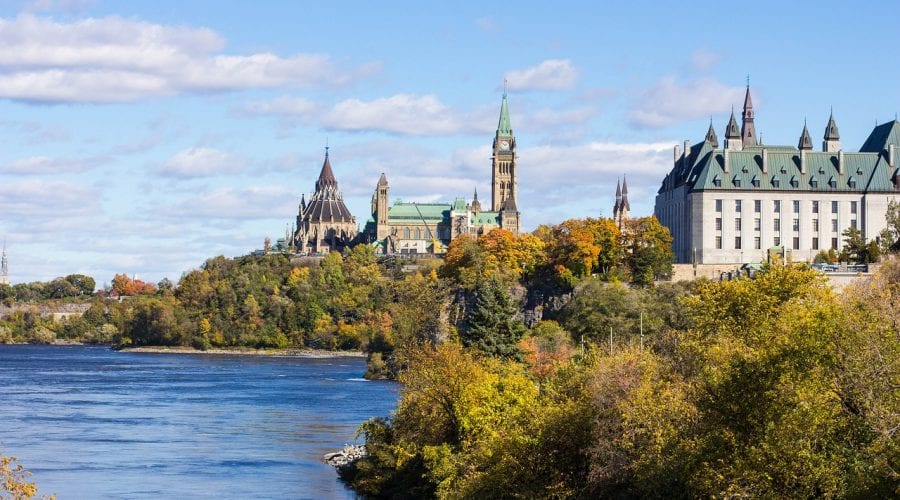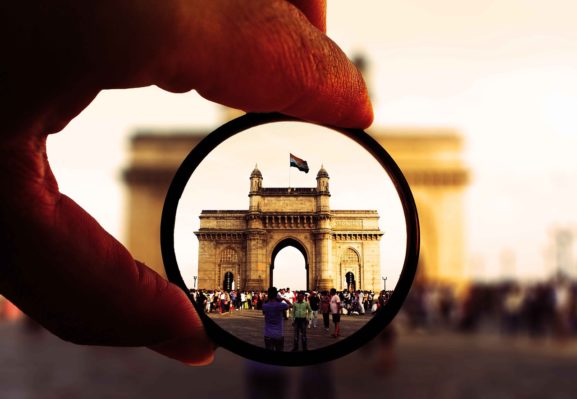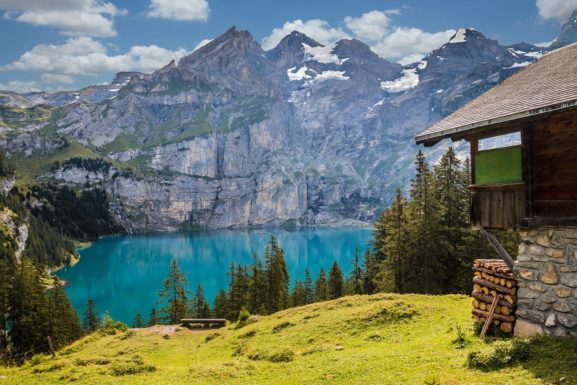Presenting: Ottawa – Canada’s Capital and An Exciting Travel Destination
In anticipation of my upcoming trip to Ottawa next weekend I have started to do some research and contacted Ottawa Tourism. Ottawa, as Canada’s capital, is one of Canada’s most popular travel destinations and it has a great variety destinations, activities and events to offer.
I had an opportunity to talk with Jantine Van Kregten from Ottawa Tourism who was kind enough to give me a great general overview of things to see and do in Ottawa.
1. Please provide us with some general information about Ottawa. How large is the city, where is it located, what is the weather like?
Ottawa is the capital of Canada, and its fourth largest city. With the neighbouring city of Gatineau in the province of Quebec, the region has about 1.2 million people. Ottawa is located in eastern Ontario, about four hours’ drive northeast of Toronto; two hours west of Montreal; and one hour north of the border with the state of New York.
Ottawa enjoys four distinct seasons, with warmest temperatures and sometimes high humidity in July and August; a temperate fall with gorgeous fall colours; a cold and snowy winter; and a wet spring.
2. How can one get to Ottawa and what is the best way of getting around in Ottawa?
Ottawa is accessible with direct flights from major centres in Canada and several U.S. cities including New York, Washington, Chicago, Philadelphia, Detroit, Atlanta and more. Ottawa is a major stop along the Windsor-Quebec City corridor of VIA Rail and bus service also links the city with other Canadian cities.
By car, major thoroughfares include Highway 416 that links Ottawa with Highway 401. Highway 417 runs through the city, while Autoroutes 5, 50 and 148 are the major highways on the Quebec side of the river.
3. Ottawa is Canada’s capital and has played a significant role in the history of this country. Please tell us more about that and the Canadian Heritage Experiences offered in Ottawa.
The story of Ottawa begins with the building of the Rideau Canal between 1826 and 1832 by Lt. Col. John By of the Royal Engineers and thousands of mostly Irish labourers. The Canal stretches 202 km (126 miles) through eastern Ontario to the St. Lawrence River and was built to ensure a supply line in case of American attack (which never came). The Canal was never used for a military purpose and its 49 locks are still operated in the same way as when they were built. In fact, the Rideau Canal is Canada’s nominee to be named a UNESCO World Heritage Site, which is expected in 2007, the 175th anniversary of its construction.
Queen Victoria decreed in 1857 that Ottawa would be the capital of the country that became Canada. The majestic Parliament Buildings were constructed shortly thereafter and remain a “must-see” attraction in the capital. As the capital, Ottawa is also home to 24 Sussex Drive (the prime minister’s residence and not open to the public); Rideau Hall (home of the Governor General, with guided tours of residence and gardens available); and dozens of high commissions and embassies from governments around the world.
Don’t miss Laurier House, home to both Sir Wilfrid Laurier and WIlliam Lyon Mackenzie King, two former prime ministers, or the Mackenzie King Estate, King’s summer home in Gatineau Park.
4. Please tell us about some of the major attractions, museums and galleries in the Ottawa area.
The latest addition to the national museum scene is the impressive Canadian War Musuem, which opened in May 2005 in a stunning location next to the Ottawa River. Canada’s most-visited museum is Gatineau’s Canadian Museum of Civilization. The National Gallery of Canada offers the largest collection of Canadian art, along with European and American masters. Other cultural facilities include the Canadian Museum of Contemporary Photography; the Canada Aviation Museum; the Canada Science and Technology Museum; the Canada Agriculture Museum; the Royal Canadian Mint; the Currency Museum of the Bank of Canada; and the Canadian Museum of Nature, currently in the midst of a massive renovation project, to be completed in 2009.
Other museums include the Bytown Museum, which tells the history of Ottawa’s early days, including the building of the Rideau Canal; the Billings Estate Museum that traces the history of a prominent local family; and the funky Diefenbunker, Canada’s Cold War Museum, a four-storey underground bunker that was constructed between 1959 and 1961 as the location to which the Canadian political and military elite would ride out the effects of a nuclear attack.
5. Our readers would like to find out about the festivals and special events in Ottawa.
The festival scene in Ottawa is a robust, year-round affair. The year kicks off with Winterlude, a huge winter festival held over the first three weekends in February. In March, the Irish community celebrates Irish week, and in March and April, the maple syrup season spawns a number of delicious festivals and events celebrating this tasty treat.
May belongs to the Canadian Tulip Festival–three weeks of celebration of Ottawa’s favourite flower. During World War II, the Dutch royal family took refuge in Ottawa and Princess Margriet was born here, in a hospital room designated Dutch soil for the event. Canadians played a huge role in liberating the Netherlands and when the royal family returned home after the war, as a gesture of friendship, respect and appreciation, they sent thousands of tulip bulbs. The bulbs have followed every year since and now 3,000,000 tulips bloom in Canada’s Capital Region.
Late May brings Canada’s largest marathon as part of the Ottawa Race Weekend. Over the summer months, festivals abound: Doors Open Ottawa showcase heritage buildings; Italian Week; the Ottawa Fringe Festival; the TD Canada Trust Ottawa International Jazz Festival; the Nortel Ottawa Dragon Boat Race Festival; Cisco Systems Ottawa Bluesfest (Canada’s largest); the Ottawa International Chamber Music Festival (the world’s largest); the Sound of Light fireworks festival; Ottawa Busker Festival; Ottawa GreekFest; CKCU Ottawa Folk Festival; the Central Canada Exhibition; and Pride Week.
On Parliament Hill, two free activities occur daily in the summer: the 10:00 a.m. Changing the Guard ceremony and the evening Sound and Light Show.
In the fall, the Gatineau Hot Air Balloon Festival colours the skies; while the La Vendemmia Harvest Festival tempts visitors’ palates. The Ottawa International Animation Festival showcases artists from around the world while the Ottawa International Writers Festival provides a forum for authors’ lively debates. Fall Rhapsody celebrates the splendid autumn colours.
The capital lights up for the holidays with the Christmas Lights Across Canada program.
6. What about restaurants and entertainment / nightlife areas in Ottawa?
Several neighbourhoods offer entertainment options in Ottawa. The ByWard Market is one of Ottawa’s oldest neighbourhoods and also functions as its entertainment district, with over 100 food and drink options in just a four-block-square area. Whether it’s fine dining, a good diner, a cosy bistro, or a romantic cafe, you can find it in “the Market.”
Elgin Street is another popular nightlife area, with an eclectic selection of bars, restaurants and cafes in just a few blocks. Bank Street offers three or four distinct areas along its length, including a popular area known as the Glebe. In the near west end, Westboro is also an attractive option for dinner and drinks.
Of course, one could also choose to explore the various options at the Casino du Lac-Leamy–whether it’s gaming excitement or a show at its popular theatre or a dinner at its five-diamond restaurant Le Baccara. The region’s other five-diamond establishment (two of only 11 across Canada) is Signatures at Le Cordon Bleu Ottawa.
7. Please give us an overview of the performing arts on offer in Ottawa.
The National Arts Centre is Canada’s premier performing arts centre, offering English and French theatre performances, dance, and the National Arts Centre Orchestra. Numerous smaller theatres also abound, in both English and French, including the Great Canadian Theatre Company, La Nouvelle Scene, Ottawa Little Theatre, Third Wall Theatre Company, Odyssey Theatre (offering outdoor performances next to the Rideau River), A Company of Fools, and many productions at Arts Court, a municipal facility.
From May 18 to June 11, the Cirque du Soleil will bring its production of Quidam to Ottawa. The Canada Dance Festival takes place every two years (June 2-10, 2006) in Ottawa and the Ottawa Fringe Festival (also in June) is one of the best ways to see new productions and new innovations. In
The Centrepointe Theatre in the west end offers a variety of performances, as do the University of Ottawa and Carleton University.
Larger events are usually held at Scotiabank Place and the Ottawa Civic Centre.
8. What are some of the shopping opportunities in Ottawa?
Some great shopping centres exist in Ottawa, including Bayshore Shopping Centre in the west end, Rideau Centre downtown, the St. Laurent Centre in the close east end, and Place d’Orleans Shopping Centre in the east end. These centres offer the best of the well-known brands.
For more eclectic offerings, the ByWard Market neighbourhood offers great fashion and housewares; as does the Glebe, Westboro, and some small towns on both the Ontario and Quebec side of the Ottawa River–inclouding Merrickville, Manotick, Perth, Chelsea and Wakefield.
9. What are the outdoor, recreational and sports opportunities in and around Ottawa?
From a professional perspective, the Ottawa Senators are particularly beloved by Ottawans, as they march to a Stanley Cup victory! The Ottawa ’67s offer a window to the Ontario Hockey League. The Ottawa Renegades provide Canadian Football League excitement while the Ottawa Lynx are part of baseball’s International League (they’re the Triple A farm team for the Baltimore Orioles).
But sports in Ottawa are much more participatory than that. Home to hundreds of kilometres of recreational pathways, Ottawans love to cycle, inline skate and hike. The Ottawa River offers unbelievable whitewater rafting, as well as canoe and kayak adventures for the adventurous.
The highest bungee freefall in Canada is located just north of Ottawa, just outside Gatineau Park. Year-round, Gatineau Park offers something for the outdoor lover. Whether it’s camping, canoeing, kayaking, hiking, mountain biking or swimming in summer; or snowshoeing or cross-country skiing in winter, the Park is beloved by all in the region.
As proof of how diverse a destination Ottawa is, it’s the only location where you can skate on the world’s largest skating rink and play in the world’s largest beach volleyball tournament?
10. What type of accommodations options are there in Ottawa?
There are over 11,000 hotel rooms in the Ottawa-Gatineau region. The major chains (Hilton, Fairmont, Westin, Marriott, Delta, Sheraton, Novotel, Holiday Inn, Best Western, Comfort Inn) are represented, as well as more unique offerings such as the boutique ARC the.hotel or Brookstreet Resort.
Downtown locations are within walking distance to many major attractions. Several bed-and-breakfast providers also offer a cosy alternative to hotels.
A comprehensive list of options is found at http://www.ottawatourism.ca
11. What are some of the major events and big news stories coming up in 2006 and beyond in Ottawa?
The Canadian Museum of Civilization celebrates its 150th anniversary in 2006. It began its life in May 1856, as part of the Geological Survey of Canada. The young museum grew into the National Museum of Canada and then, into the National Museum of Man. In 1986, it became the Canadian Museum of Civilization, moving into its magnificent Gatineau buildings three years later and continuing to present informative and entertaining exhibitions for a wide range of interests.
The Casino du Lac-Leamy celebrates 10 years of non-stop excitement in March 2006. Originally opened as the Casino de Hull, it has grown to be one of the top attractions in Canada’s Capital Region, offering gaming each day from 9:00 a.m. to 3:00 a.m.; five-diamond dining at Le Baccara; an adjoining Theatre offering matinees, musical programming, and variety shows of all kinds; docking facilities; an adjacent Hilton hotel with spa; and conference facilities. The Casino is celebrating with a series of themed activities, including the popular 7 Lucky Days promotion which offers a different promotion each day of the week.
Emily Carr is the featured exhibition from June 2 through September 3, 2006 at the National Gallery of Canada. Her paintings of First Nations villages and landscapes of the northwest Pacific coast, including many images of totem poles, help define Canadian art, especially that of the early 1900s.
In the third Indiana Jones movie, the climactic scene took place in a spectacular desert location carved into the side of a cliff. That venue is part of Petra, located in Jordan, and from April 7, 2006 through January 2, 2007, you can learn more at the Canadian Museum of Civilization’s exhibition PETRA: City of Stone.
The Seven Years War is the focus of a new exhibit at the Canadian War Museum, Ottawa’s newest cultural attraction which opened with much fanfare in May 2005. The exhibit Clash of Empires: The War That Made Canada runs from May 18 to November 12.
Outdoor activities are a crucial part of Ottawans’ lives. This summer, residents will be able to relish in others’ accomplishments, too, as Ottawa plays host to more than 3,500 athletes and coaches during the 2006 Ontario Summer Games from August 9 to 13, 2006.
Québec Scene: April/May 2007: The National Arts Centre has played host to two previous “scenes”–Atlantic Scene in 2003 and Alberta Scene in 2005–and in 2007, it’s Québec’s turn to shine, as the very best of its theatre, music, dance, comedy, culinary arts, literature and film forms the basis of this cultural festival.
Treasures from Beijing: May 11-September 30, 2007: At the Canadian Museum of Civilization, learn more about the development of Chinese civilization while viewing selected treasures from the National Museum of China. There will also be an attempt to provide a glimpse of China’s recent history, including economic reforms and the Olympic Games bid.
Renoir’s Landscapes: June 8-September 9, 2007: One of the best-loved of all the Impressionists, Renoir will be front and centre next summer at the National Gallery of Canada.
FIFA World Youth Championship 2007: July 1-22, 2007: Ottawa has been selected as one of six Canadian host cities for this three-week, 24-nation, 52-match tournament featuring the best youth (under-20) soccer players in the world. It is the second largest event staged by FIFA, following the FIFA World Cup.
Rideau Canal as UNESCO World Heritage Site: The heritage Rideau Canal, stretching 202 km from Ottawa to Kingston, is Canada’s entry to be named a UNESCO World Heritage Site. The designation should be received in time for the 175th anniversary of the completion of the Canal in 2007.
Portrait Gallery of Canada: Following last spring’s opening of the new Canadian War Museum, the next major cultural institution planned for Ottawa is the Portrait Gallery of Canada, due to open across the street from Parliament Hill in late 2007.
Thank you, Jantine, for providing such a great overview of all the things Ottawa has to offer. You have given me some great ideas for my trip next week and possible future excursions over the coming year.


